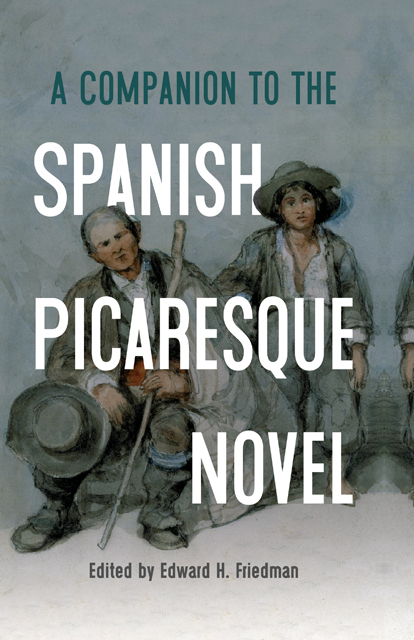Book contents
- Frontmatter
- Contents
- List of Illustrations
- List of Contributors
- Foreword
- 1 The Picaresque as a Genre
- 2 On the Picaresque and Its Origins
- 3 Francisco Delicado, La lozana andaluza
- 4 Lazarillo de Tormes
- 5 Mateo Alemán, Guzmán de Alfarache
- 6 Francisco de Quevedo, La vida del Buscón
- 7 La pícara Justina
- 8 Alonso Jerónimo de Salas Barbadillo, La hija de Celestina
- 9 Miguel de Cervantes and the Picaresque
- 10 Vicente Espinel, Marcos de Obregón
- 11 Carlos García, La desordenada codicia de los bienes agenos
- 12 Estebanillo González
- 13 Critical Approaches to the Picaresque
- 14 The Picaresque in Spanish America
- 15 Continuations: France and England
- 16 The Continuity of the Picaresque: Spain
- Bibliography
- Index
- Tamesis • Companions
13 - Critical Approaches to the Picaresque
Published online by Cambridge University Press: 11 January 2023
- Frontmatter
- Contents
- List of Illustrations
- List of Contributors
- Foreword
- 1 The Picaresque as a Genre
- 2 On the Picaresque and Its Origins
- 3 Francisco Delicado, La lozana andaluza
- 4 Lazarillo de Tormes
- 5 Mateo Alemán, Guzmán de Alfarache
- 6 Francisco de Quevedo, La vida del Buscón
- 7 La pícara Justina
- 8 Alonso Jerónimo de Salas Barbadillo, La hija de Celestina
- 9 Miguel de Cervantes and the Picaresque
- 10 Vicente Espinel, Marcos de Obregón
- 11 Carlos García, La desordenada codicia de los bienes agenos
- 12 Estebanillo González
- 13 Critical Approaches to the Picaresque
- 14 The Picaresque in Spanish America
- 15 Continuations: France and England
- 16 The Continuity of the Picaresque: Spain
- Bibliography
- Index
- Tamesis • Companions
Summary
This chapter will examine four illustrative critical approaches to early modern Spanish picaresque fiction as exemplified by the anonymous first of its genre, the Lazarillo de Tormes: Structuralism, New Historicism, Post-Structuralism, and discourse analysis. The section on Structuralism will draw upon my own analysis of the Lazarillo’s fifth tratado as Erasmian satire in Exorcism and Its Texts: Subjectivity in Early Modern Literature of England and Spain. The critical approach of New Historicism will be represented by Anne Cruz’s interpretation of the same picaresque text in Discourses of Poverty: Social Reform and the Picaresque Novel in Early Modern Spain. The Post-Structuralist view was developed in schematic form by Anthony Cascardi in his critique of Jose Antonio Maravall in Ideologies of Hispanism by using the concepts of interpellation and Ideological State Apparatuses first developed by Louis Althusser in “Ideology and Ideological State Apparatuses.” Finally, David Gitlitz’s essay “Inquisition Confessions and Lazarillo de Tormes” will provide a model for how we might utilize the theoretical tools of discourse analysis to compare rhetorical structures encountered in the Lazarillo and other works of picaresque fiction to formulaic aspects of confessions from penitents elicited by Inquisitors through torture, among other methods.
Structuralism
The theoretical approach of Structuralism, which grew out of a combination of Russian Formalism and anthropology, is particularly well-suited to the study of the picaresque. Stemming in large part from the work of anthropologist Claude Levi-Strauss, who studied myths (“The Structural Study of Myth”), and Vladimir Propp, who studied folk tales or fairy tales (“The Structural and Historical Study of the Wondertale”), Structuralism is famous for generating mathematical-looking charts, at least, in the computer generation. The original Formalists and Structuralists started with piles of index cards! The essential method of the Structuralists is to search for overall patterns or categories common to many different myths or tales; these units are variously called mythemes or, in a religious context, theologemes (Algirdas Julien Greimas, “Comparative Mythology”).
Fairy tales are a good way to illustrate the method because most readers are already familiar with these stories from childhood.
- Type
- Chapter
- Information
- A Companion to the Spanish Picaresque Novel , pp. 147 - 155Publisher: Boydell & BrewerPrint publication year: 2022



